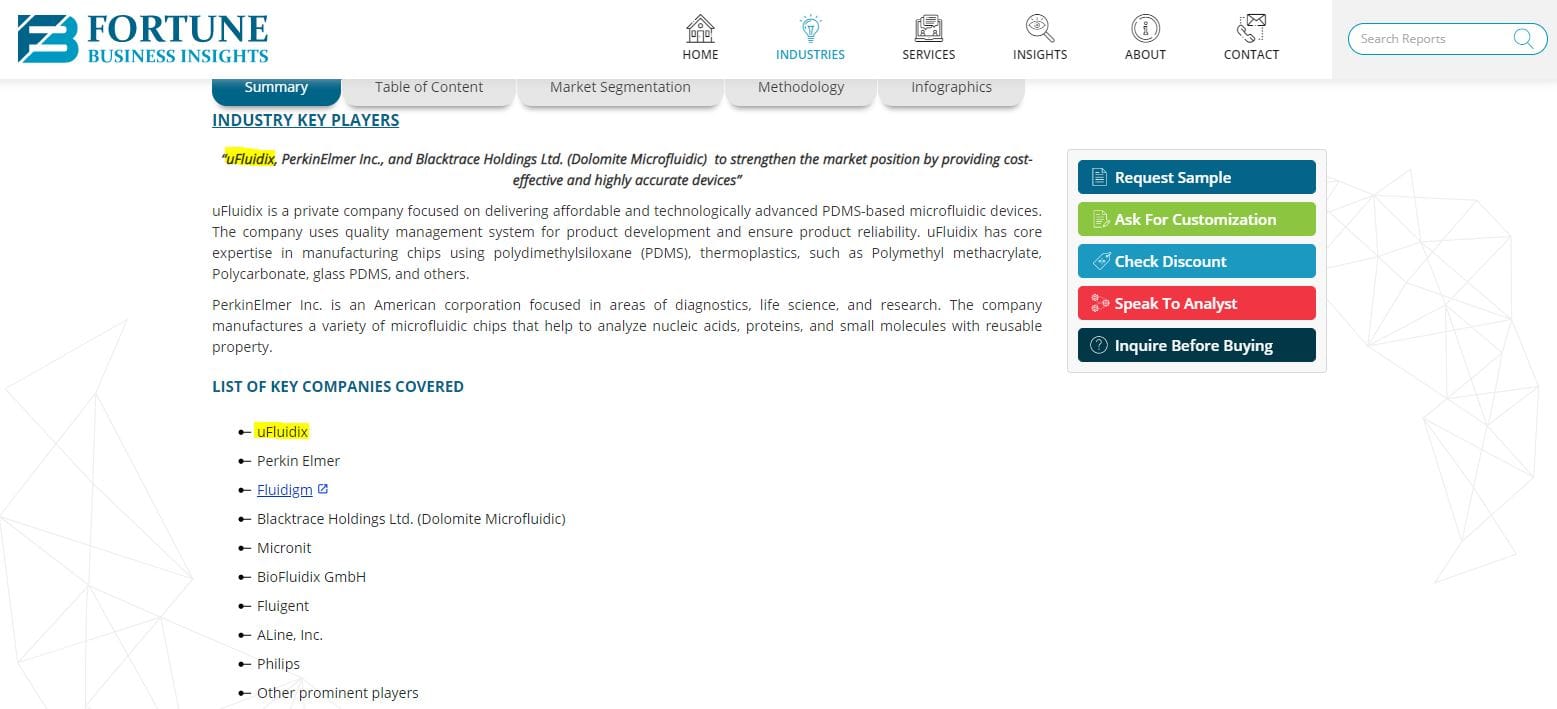The global microfluidic devices market is expected to gain impetus from increasing technological advancements in the biotechnology domain. According to a report by Fortune Business Insights, titled, “Microfluidic Devices Market Size, Share & Industry Analysis, By Device Type (Chips, Sensors, and Others), By Material (Glass, Silicon, PDMS and Others), By Applications (Pharmaceutical & Life Science Research, Diagnosis & Treatment, and Others), By End-user (Diagnostic Centers, Research Institutes, Pharmaceutical and Biotechnology Companies, Healthcare Facilities and Others) and Regional Forecast, 2019-2026,” the market is projected to reach USD 22.65 Billion by 2026, thereby exhibiting a CAGR of 20.5% during the forecast period. However, the global microfluidic devices market size was valued at USD 5.14 Billion in 2018. The report further states that renowned market players are focusing on low-cost materials for manufacturing microfluidic sensors and chips. It would contribute to the market growth in the forthcoming years.
The report consists of the latest releases and new mechanical enhancements to engage the consumers to settle on instructed business decisions, design, and complete their required executions. It mainly focuses on the microfluidic devices market trends, open entryways, upcoming changes in methodology, and current business and progressions.
 Fortune Business Insights profiles some of the renowned companies operating in the global microfluidic devices market. They are as follows:
Fortune Business Insights profiles some of the renowned companies operating in the global microfluidic devices market. They are as follows:
- uFluidix
- Perkin Elmer
- Fluidigm
- Blacktrace Holdings Ltd. (Dolomite Microfluidic)
- Micronit
- BioFluidix GmbH
- Fluigent
- ALine, Inc.
- Philips
- Other prominent players


